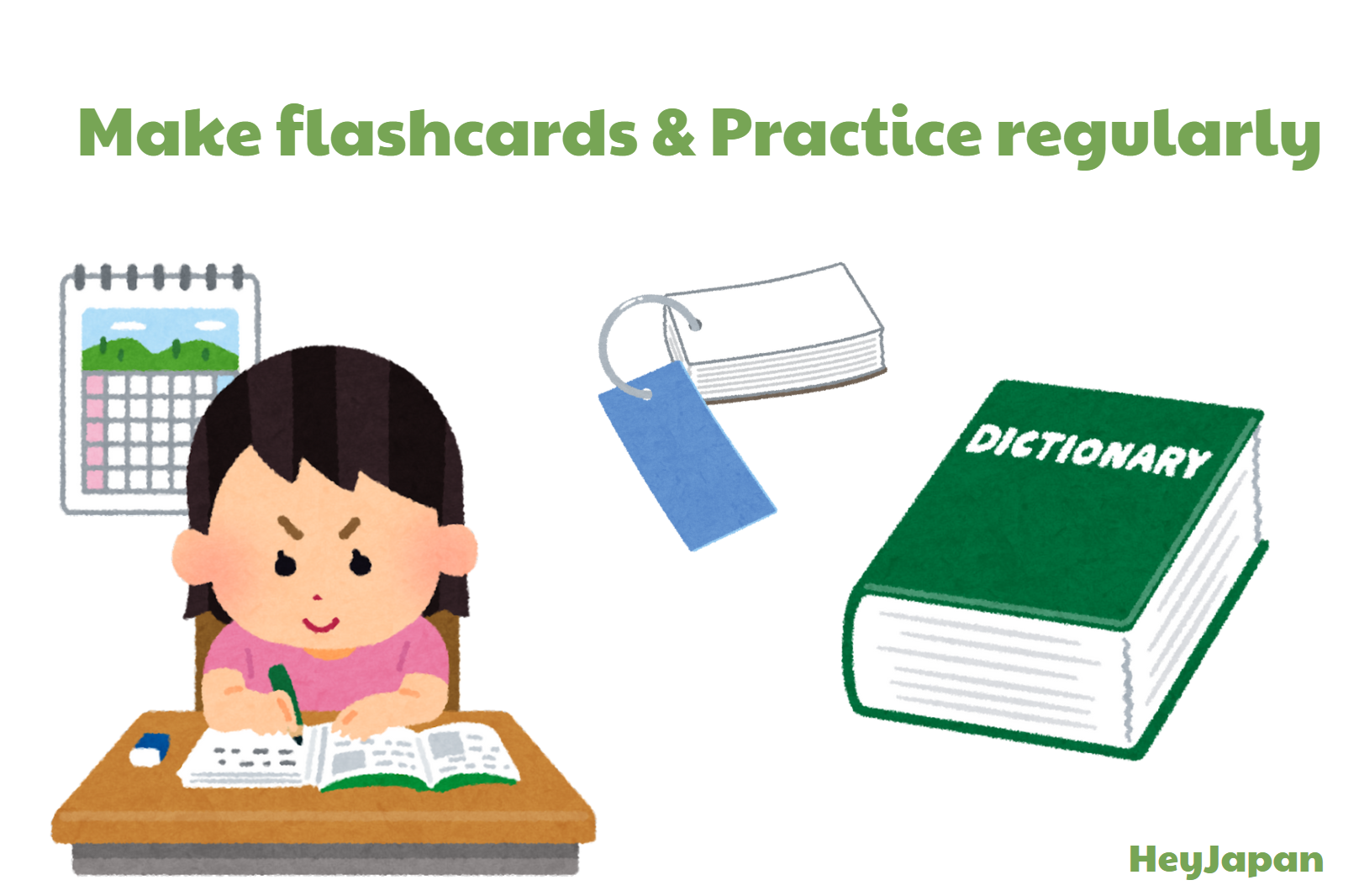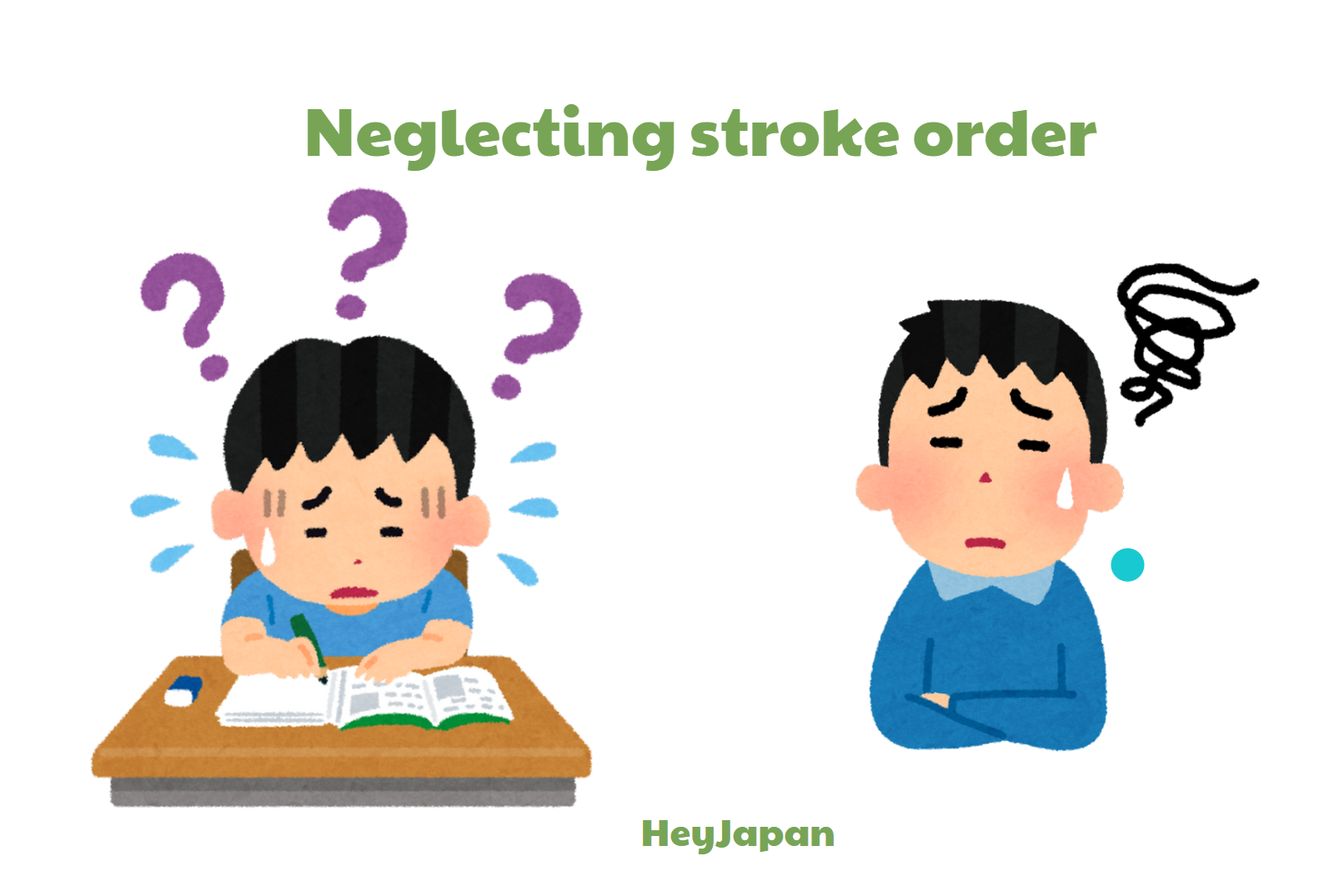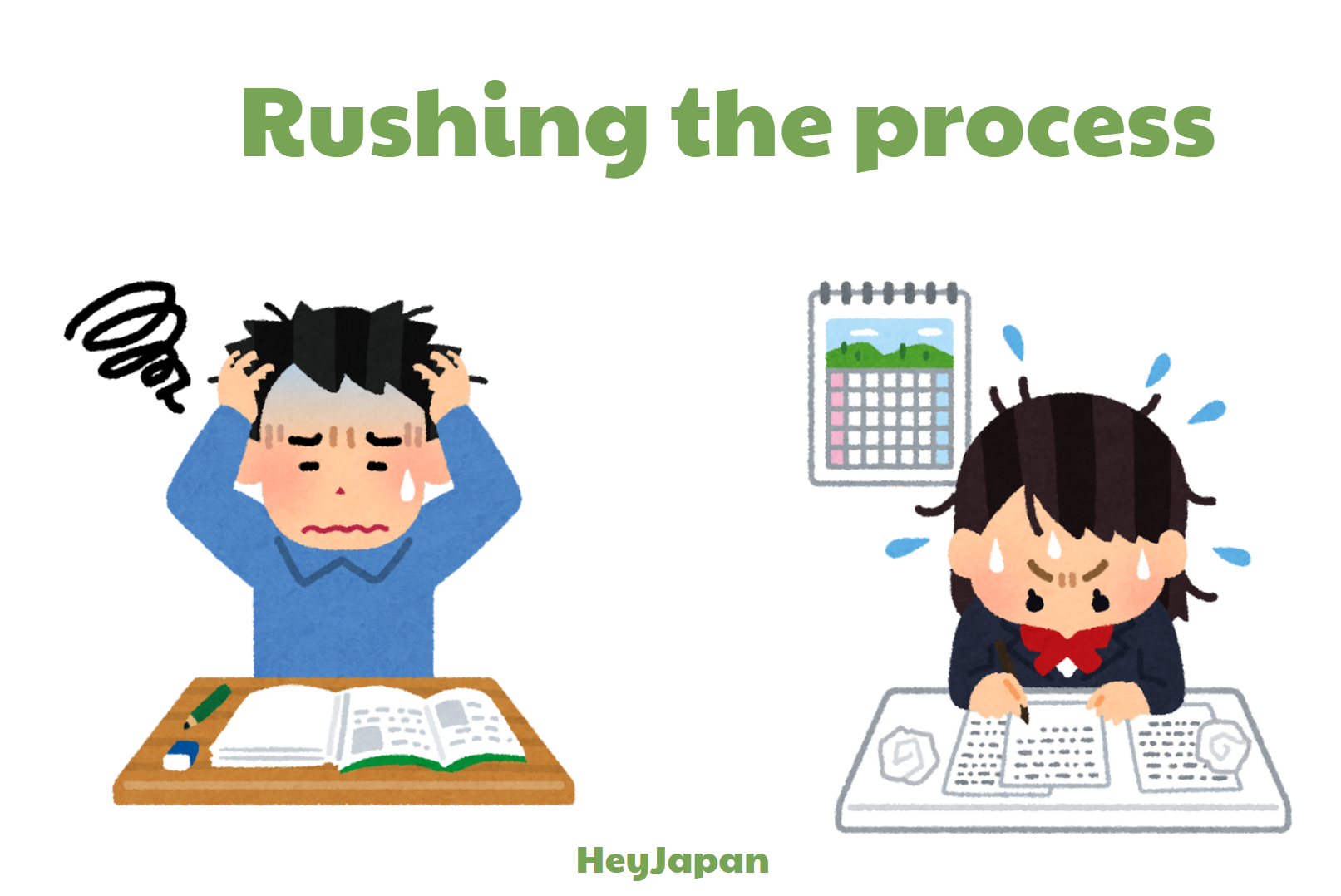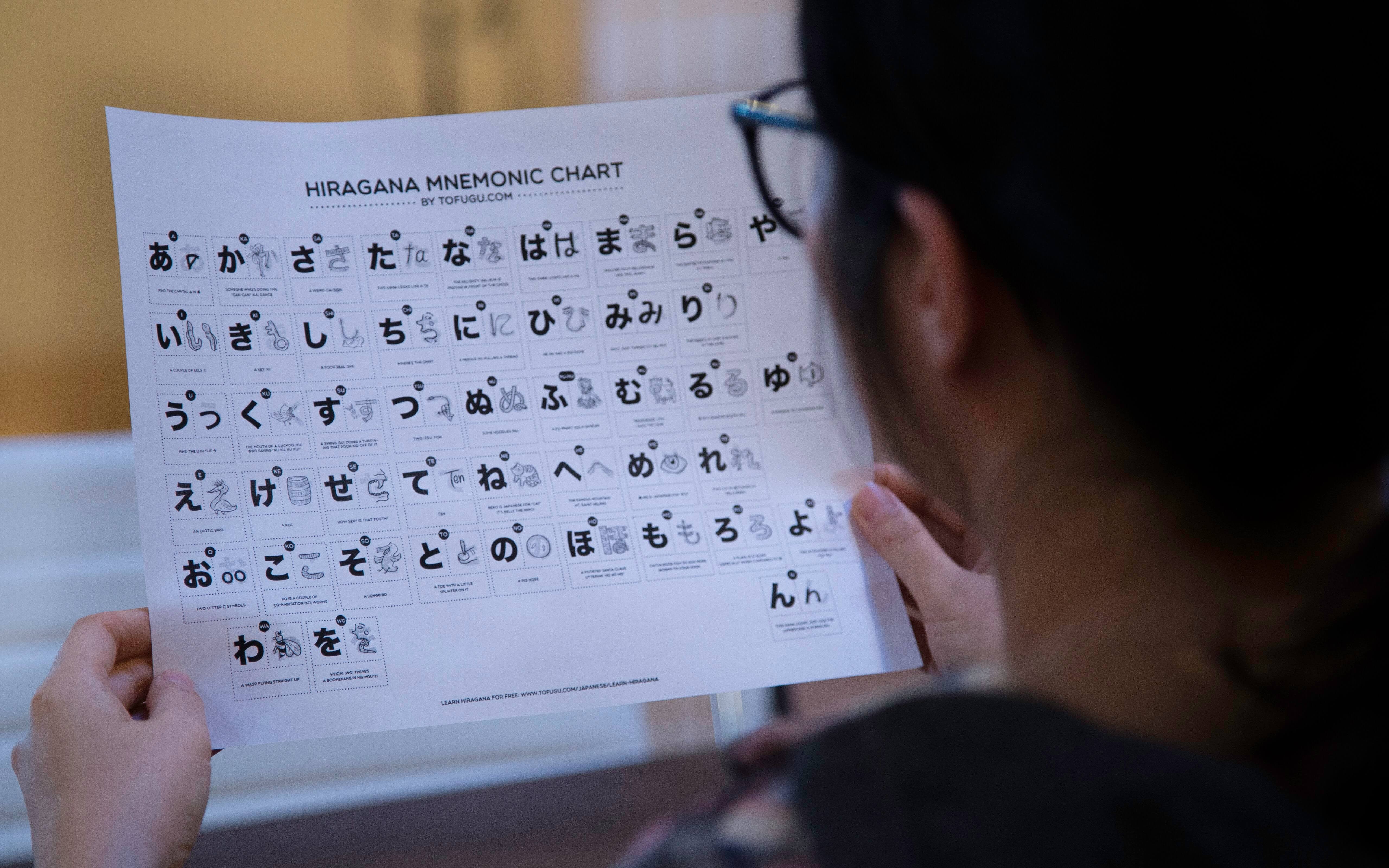- 1. Learn Hiragana & Katakana first
- 2. Study Kanji radicals
- 3. Set realistic goals
- 4. Start with common Kanji
- 5. Don’t neglect writing practice
- 6. Make flashcards & Practice regularly
- 4 Biggest mistake while learning Kanji
- 1. Neglecting stroke order
- 2. Overemphasizing memorization
- 3. Rushing the process
- 4. Lack of review
- Conclusion
Learning how to study Kanji can seem overwhelming, but with the right methods, you can master it effectively. Whether you're a beginner or an advanced learner, understanding the best techniques for memorizing Kanji is essential. In this guide, we’ll explore methods like flashcards, spaced repetition, and other strategies to help you learn Kanji faster and more efficiently. Let’s dive into these helpful tips for mastering Kanji!
1. Learn Hiragana & Katakana first
Before diving into Kanji, it’s essential to learn Hiragana and Katakana, the two phonetic alphabets in Japanese. These two systems are the foundation of reading and writing in Japanese and will significantly simplify your Kanji studies. You can read more about their importance and usage in the article Which Japanese alphabet is used the most?
📌 How to do it:
- How to study Kanji with Hiragana & Katakana: Start with the 46 basic characters of each alphabet, using resources like flashcards, apps, or writing drills.
- Practice reading simple texts: Read children’s books, manga, or simple articles to reinforce your knowledge of these characters.
💡 If you're still struggling to remember Hiragana, check out these effective techniques on how to memorize Hiragana to speed up your learning process.
2. Study Kanji radicals
Kanji radicals are the building blocks of Kanji characters. Learning radicals first can make it easier to understand and remember complex Kanji because many characters share common components.
📌 How to study Kanji radicals:
- Learn the 214 traditional radicals and use them to break down Kanji characters. Resources like the Kanji Learner’s Dictionary can help you identify and memorize these radicals.
- Practice with examples: For each radical you learn, try finding several Kanji characters that include it. This will help reinforce your learning and improve your ability to understand Kanji structure.
3. Set realistic goals

Setting clear goals and using helpful resources will boost your progress. For those looking for a structured guide, you might find the Best Book to Learn Japanese Kanji useful in organizing your study.
📌 How to study Kanji with realistic goals:
- Set daily or weekly goals: Learn 5-10 new Kanji per day or memorize 50 Kanji per week.
- Track progress: Use a Kanji study app or a notebook to record your daily progress and review regularly. This will help you stay focused and adjust your learning pace.
4. Start with common Kanji
Focus on learning the most common Kanji first. There are thousands of Kanji, but only a few hundred are used regularly in daily life, and they make up the majority of written Japanese.
📌 How to study common Kanji:
- Use JLPT lists as a guide to study Kanji from levels N5 to N3, which cover the most frequently used Kanji.
- Prioritize Kanji used in daily life: Start with Kanji for numbers, days of the week, family terms, and common verbs. Learning these first will give you immediate practical benefits.
💡 If you’re also studying Katakana, you might be wondering how many Katakana are there. Understanding their structure can make your Kanji learning journey even smoother.
5. Don’t neglect writing practice

The National Institute for Japanese Language and Linguistics found that learners who practiced writing Kanji regularly scored 40% higher on Kanji recognition tests compared to those who only practiced reading.
Kanji is complex, and writing them by hand can significantly improve memorization and recall. Writing practice engages both visual and muscle memory, which strengthens your knowledge.
📌 How to do it:
- How to study Kanji through writing: Dedicate time each day to write out Kanji characters. Start with simpler Kanji and gradually move to more complex ones.
- Use grid paper or apps: Use grid paper to practice the correct stroke order or try apps like Kanji Study or WaniKani that simulate handwriting.
💡 Not sure when to use Katakana? Read more about when Katakana is used in Japanese and how it differs from Hiragana and Kanji.
6. Make flashcards & Practice regularly
Research from Psychological Science has shown that spaced repetition with flashcards improves memory retention by up to 40%. In a study by The Japanese Language Proficiency Test (JLPT), learners who used flashcards for daily practice were 50% more likely to pass the JLPT N4 and N3 exams compared to those who didn’t.

Flashcards are a powerful tool for memorizing Kanji. Regular review ensures that your knowledge is retained long-term.
📌 How to study Kanji with flashcards:
- Create flashcards for each Kanji, writing the character on one side and its meaning, pronunciation, and an example sentence on the other side.
- Use spaced repetition: Review your flashcards daily and gradually increase the time between reviews for better retention. Apps like HeyJapan or Quizlet are great tools for this.
4 Biggest mistake while learning Kanji
1. Neglecting stroke order

One of the most common mistakes learners make when studying Kanji is neglecting the correct stroke order. This can lead to illegible writing and poor retention of the characters.
📌 How it affects your learning:
- Bad writing habits: If you don't follow the correct stroke order, you risk developing sloppy handwriting, which can hinder your ability to recognize Kanji in the future.
- Slower recall: Research from The National Institute for Japanese Language shows that improper stroke order makes it harder to remember Kanji in the long term, as it affects the neural pathways used for recognition.
📌 How to avoid it:
- Always learn and practice the stroke order from the beginning. Use resources such as Kanji writing apps or websites that provide correct stroke order demonstrations.
- Write each Kanji several times, focusing on maintaining the correct stroke sequence. Using grid paper or apps like "Kanji Study" can help reinforce this habit.
2. Overemphasizing memorization
Focusing too much on rote memorization can lead to quick, short-term recall but poor long-term retention. Many learners try to memorize Kanji without understanding their meanings, readings, or how to use them in context.
📌 How it affects your learning:
- Shallow understanding: Memorizing Kanji without context or meaning results in weak connections and makes it difficult to apply the Kanji in real-life situations.
- Forgetting quickly: A study from The University of Tokyo found that learners who focus only on memorization tend to forget over 40% of the Kanji they studied within a few weeks, as they haven't formed meaningful associations.
📌 How to study Kanji with context:
- Focus on understanding the meaning and usage of each Kanji. Learn them in phrases, sentences, or through reading material. This will give the Kanji context and make it easier to remember.
- Apply spaced repetition: Use tools like Anki to review Kanji regularly, reinforcing their meanings and readings over time.
3. Rushing the process

Learning Kanji is a gradual process, and rushing through it often leads to burnout or incomplete learning. Many learners try to learn too many Kanji in a short amount of time without properly consolidating their knowledge.
📌 How it affects your learning:
- Increased frustration: Trying to learn too much at once can lead to overwhelm and frustration, which may cause learners to give up or move on without fully mastering the Kanji.
- Superficial learning: According to a study published by The Japan Foundation, learners who rush the Kanji learning process often remember only about 20% of the characters studied after a few months, as they lack deep, meaningful engagement with the material.
📌 How to avoid it:
- How to study Kanji at a steady pace: Set realistic goals and break down your study into manageable chunks. Learn a few Kanji per day and gradually increase the difficulty as you progress.
- Focus on quality, not quantity: Don’t rush through the Kanji. Take the time to understand each character and its readings before moving to the next one.
4. Lack of review
‘Another common mistake is failing to review previously learned Kanji. Without regular review, Kanji knowledge can fade quickly, and you may find yourself struggling to recall characters you’ve already studied.
📌 How it affects your learning:
- Forgetting learned Kanji: Studies have shown that learners who don’t review regularly forget up to 50% of the Kanji they've learned within weeks of initial study Loss of confidence: A lack of review can lead to frustration, as you feel like you’re constantly relearning the same Kanji instead of progressing.
📌 How to avoid it:
- How to study Kanji through regular review: Schedule regular review sessions to reinforce what you've learned. Use spaced repetition systems (SRS) to ensure that you’re revisiting Kanji before you forget them.
- Use apps and tools for reviews: Tools like HeyJapan or WaniKani use algorithms to help you review Kanji at optimal intervals, ensuring that you retain your knowledge over the long term.
Conclusion
Learning Kanji isn’t just about brute memorization — it’s about building a system that works for you. From mastering radicals to using flashcards and spaced repetition, every step you take brings you closer to fluency.
But let’s be real — it’s easy to feel overwhelmed or lost without guidance. That’s where smart tools make all the difference.
💡 If you're ready to supercharge your Kanji learning with spaced repetition, writing practice, native pronunciation, and real-life usage — all in one place — then try the HeyJapan app. Designed for learners at every level, it helps you learn smarter, not harder.

Start small. Stay consistent. Use the right tools. And soon, Kanji won’t feel like a mountain — just another part of your daily wins.









